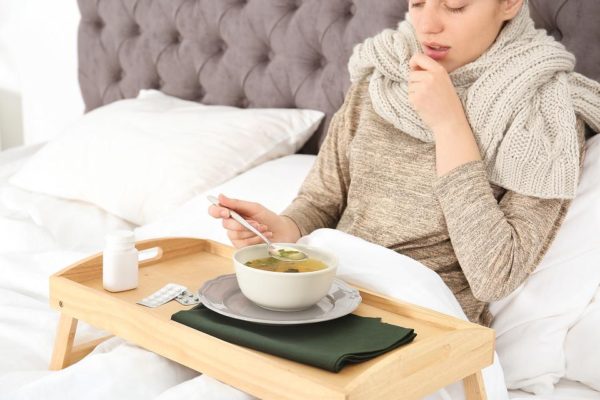Salmonellosis is an infection with a bacterium called Salmonella. It is one of the leading causes of food poisoning in Canada. Most infected people suffer from stomach cramps, diarrhea, and fever. These symptoms appear 12 to 72 hours after ingestion of the contaminated food. Salmonella is found mainly in raw or undercooked foods: poultry, meat, seafood, and eggs. It can also contaminate vegetables or food left without refrigeration for several hours. Domestic animals, especially birds and reptiles can also transmit a Salmonella infection. Usually, recovery occurs within 4 to 7 days, without requiring treatment. The infection, however, is serious and even fatal for the elderly or sick as well as for infants.
Salmonellosis Infection: Sources of contamination
People who are staying in areas of the world where health conditions are deficient are at higher risk for salmonellosis.
List of pathogens causing food recalls
- Listeria monocytogenes
- Salmonella
- E. coli
- E. coli 0157: H7
- Staphylococcus aureus
Food: In more than 90% of cases, it is the consumption of food contaminated with animal excreta. Foods contaminated with Salmonella do not necessarily show visible alterations or suspicious odors. These are mainly eggs (and products containing them), meat, and poultry, which are eaten raw or undercooked. However, any food – including fruits and vegetables – may carry salmonella, especially if is washed with contaminated water or comes into contact with contaminated raw meat.
Even if meat has been frozen adequately, it may present risks. In fact, as soon as the cold chain is broken, there is a risk of contamination. This is why summer is more conducive to contamination with salmonella.
Only baking can cause bacteria. Immaculate hygiene during meal preparation so essential to prevent contamination.
Pets: Salmonella is naturally present in the intestines of animals. Many cases of salmonellosis in children are associated with birds or reptiles (especially turtles and iguanas but also lizards and snakes) that served as pets. Contamination can be done simply by touching the animal (the skin of the reptiles is often contaminated) or its excrement, but this is not always the case. The mere fact of touching an object that comes in contact with the animal may suffice. Transmission from one person to another. The risk is higher when the infected person prepares a meal for other people. Generally speaking, Salmonella found all over the house as it is a resistant bacterium that can survive for some time outside a living host.
Salmonellosis Infection Complications
Usually, salmonellosis has no serious consequences. However, the elderly, infants and impaired may suffer more severely.
- The most common complication is dehydration. It is therefore advisable to hydrate well as long as the symptoms persist. A few weeks may pass before the intestinal function returns to normal.
- On rare occasions, the infection passes through the intestinal barrier and spreads to various parts of the body through the bloodstream. It should be treated immediately with antibiotics.
- Some people with salmonella can develop a form of reactive arthritis 3 to 4 weeks after infection: Reiter’s syndrome. It is, however, exceptional.
- People who have already been infected with Salmonella often become asymptomatic carriers of the bacteria for some time. This means that they have no symptoms but excrete bacteria in their stools. For adults and the elderly, this condition lasts on average up to 12 weeks after infection and up to 1 year for children 5 years and under. Less than 1% of people become chronic carriers. Asymptomatic carriers may still be contagious but the risk is relatively low and the duration of the contagion period is unknown.
- Another strain of salmonella, Salmonella typhi, causes a high fever called typhoid fever, rather than digestive disorders, but not discussed here.

Salmonellosis Infection Symptoms
The symptoms of salmonellosis are confused with those of several other diseases.
- High fever
- Stomach cramps
- Diarrhea
- Nausea
- Vomiting
- Headache
- Signs of dehydration: Dryness of the mouth and skin, feelings of less frequent urination, and urine darker than usual, weakness, and eyes hollow.
People at Risk
Some people are more at risk of food poisoning. They struggle harder against infections. Special care is required when preparing food.
- People with chronic inflammatory bowel disease or a condition that reduces the body’s natural immune defenses against Salmonella: Crohn’s disease, ulcerative colitis, HIV infection, diabetes, cancer, etc.
- The elderly, pregnant women, and young children.
- People who have just received an antibiotic treatment because these drugs alter the intestinal flora. Those who take oral corticosteroids are also at higher risk.
- Possibly, people whose stomach secretes less hydrochloric acid. The acidity of the stomach helps to destroy salmonella. Here are some possible reasons:
- Use of antacids of the proton pump inhibitor type (eg Losec®, Nexium®, Pantoloc®, Pariet®, Prevacid®)
- Absence of acid secretion by the stomach ], caused by chronic gastritis or other problem
- Stomach surgery to correct hyperacidity
- Pernicious anemia.
Risk factors
- Staying in a developing country
- Having a pet, especially if it is a bird or a reptile
- The season: Salmonellosis is more frequent in summer.
Basic Preventive Measures
There is no vaccine to protect against food poisoning caused by salmonellosis. It is, therefore, appropriate hygiene measures that will avoid contamination by food and animal excrement. From producer to consumer, all are concerned.
People with more fragile health must follow hygiene advice:
1. Hand Hygiene
- Wash your hands frequently.
- While preparing a meal, wash your hands before moving from raw food to cooked food.
2. For foods
All foods of animal origin can transmit salmonella.
- Avoid eating raw eggs (and products that contain them), poultry, and meat
- Cook these foods until they reach the recommended internal temperature
When preparing food:
- Utensils used for the preparation of uncooked food should also be washed before use for other foods;
The surfaces and counters must be thoroughly cleaned: the ideal is to prepare the meat on a separate surface - Uncooked meat should not be placed in contact with cooked or ready-to-eat foods.
- The refrigerator should have a temperature of 4.4 ° C (40 ° F) or less, and the freezer, -17.8 ° C (0 ° F) or less
- Always wash fresh fruits and vegetables under running water before eating them
- Unpasteurized milk and milk products (such as raw milk cheeses) can also transmit salmonella.
- It is advisable to avoid them if you are at risk (pregnant women, young children, sick or elderly people).




